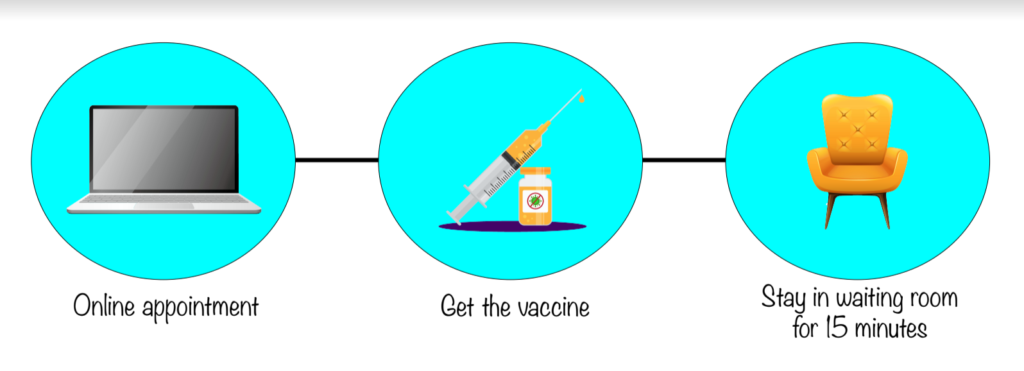My sister Michelle, a second-year medical school student, arrived at Ronald Reagan UCLA Medical Center on Feb. 10 to receive her second shot of the Pfizer COVID-19 vaccine. It had been a little over three weeks since her first shot, after which she had nothing more than arm soreness.
Like most of her classmates, she had gotten the vaccine early in the process.
She said she was a little nervous about getting the second dose because she heard the side effects were more severe, but she was still excited about completing the vaccination regimen.
Once she received her second shot, she was asked to sit in the waiting room for 15 minutes in case of immediate adverse effects.
The vaccination process was very smooth since they made appointments in an online portal and got the vaccine as soon as they arrived. The hospital was not too crowded, and the waiting area was socially distanced, so it was fairly safe.
Around 12 to 15 hours after the second shot, my sister started to develop some muscle aches and chills, but it was still manageable, which was the case for most of her classmates as well.
She had purposely scheduled the vaccine around a time when her schedule was a bit lighter so that she would not have to take any days off. She was told that she could take Tylenol to help manage symptoms, but she did not think her symptoms were significant enough to warrant the use of it.
My 65-year-old aunt, however, had a much different experience with the vaccine. She is a clinical genetic scientist at Kaiser Permanente.
She received the Moderna vaccine, which is rumored to have more severe post-symptoms, and had inflammation on her arm as well as a mild headache for two to three days following the first shot.
When she received the second shot, she had another mild headache because of her slightly higher blood pressure. The following day, her whole body was sore, especially her lower back, and she had a mild fever and chills. She also experienced a temporary loss in appetite.
Despite this, she did not take any Tylenol but instead relied on drinking more water and taking an afternoon nap. After her nap, her symptoms were a little better, and the next day they were mostly gone. She just felt a bit fatigued and had a sore throat.
By the third day after getting the vaccine, her post-symptoms were completely gone and she returned to work.
The process that she went through for getting her second vaccine dose was not as smooth as my sister’s since she got it at a more public institution, Kaiser Permanente San Jose Medical Center. It was more crowded, with both medical workers like herself and regular people waiting to receive the vaccine. She even struggled to find a parking spot.
Still, my aunt said the process was safe. There were tents set up in the parking lot in which people would receive their shots and remain socially distanced from each other.
Now that she has received the vaccine, she feels much safer from the potential life-threatening effects of COVID-19 and believes it was worth the symptoms.
My sister also feels more protected, but still wants to remain cautious about leaving her apartment since most of the population has not been vaccinated yet. Even though she is safe from severe infection, she is still concerned about carrying the virus and potentially spreading it to others who are not protected.
Hearing my sister and aunt’s experiences, I have become pretty excited, but also nervous, for when the time comes for me to get the vaccine. Though both the Moderna and Pfizer vaccines seem effective and safe, I would prefer to get the Pfizer vaccine since the post-symptoms do not seem to be as strong.
I am slightly nervous about the potential post-symptoms of the vaccine, but I know that I will more than likely be fine in the end. If I feel badly, I plan on just resting more, drinking more water, and possibly taking Tylenol, though it most likely won’t be necessary.
With vaccine production and distribution ramping up and Walmart, CVS and Walgreens making the vaccine available for free for all American families on March 11, I feel that right now is a great opportunity for people at risk to feel more protected.
Needless to say, the vaccine is an integral part of slowing down the virus, and I am hopeful that its distribution will help us return to normal life by the start of the next school year.


























